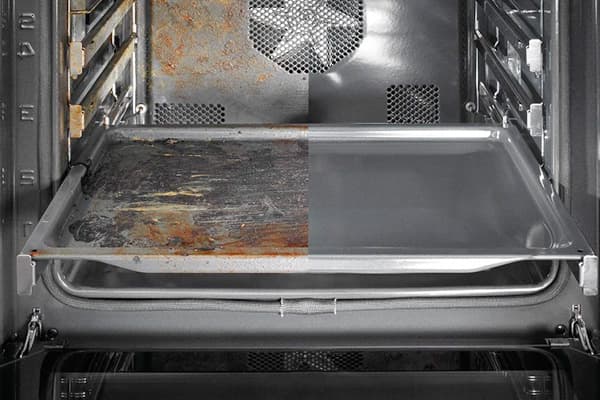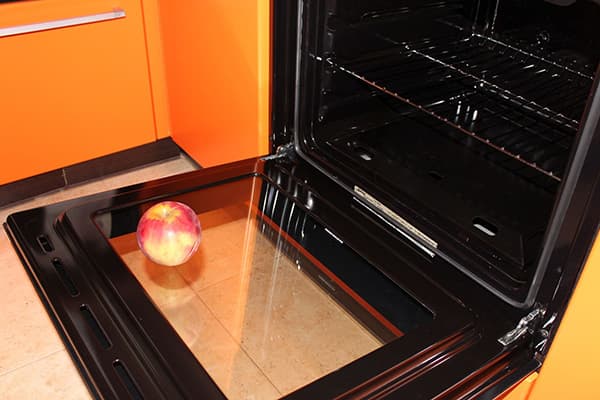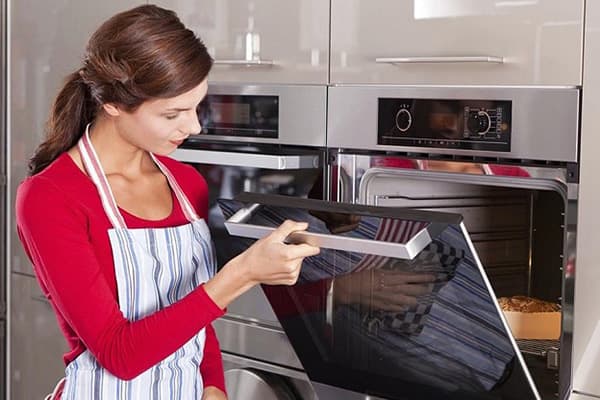Pros and cons of ovens with a pyrolytic cleaning system
Some modern electric ovens are equipped with a pyrolysis function. They cost much more than regular ones, so not every housewife will decide to buy such household appliances. Moreover, not everyone has any idea what it is. Meanwhile, pyrolytic cleaning of the oven is a very useful option that helps the modern housewife save a lot of time.

What is the essence of pyrolysis?
Pyrolytic oven cleaning - what is it? Pyrolysis is a special method of self-cleaning all the “insides” of an electric oven from carbon deposits and dirt. It lies in the fact that when the temperature inside the oven rises to 500 degrees and there is a lack of oxygen, a chemical reaction takes place, during which contaminants literally break down into molecules without any cleaning agents. After this, all that remains is to sweep away and remove the resulting ash. That is, you don’t have to spend hours scrubbing off everything that’s burned, stuck, and built up on the walls of the oven.
But in any family they prepare not only baked goods, but also meat dishes with cheese, mayonnaise, fat, sauces, which inevitably splash and accumulate inside the oven. The pyrolysis cleaning system makes it possible to solve this problem without the direct participation of the housewife - she just needs to press a button.
In addition, pyrolysis does not have any harmful effects on people, animals, or the environment.
What is special about pyrolysis ovens?
The design of such ovens is somewhat different from the usual one, which is dictated by the specifics of the cleaning process:
- All internal elements are made of high-quality crucible steel, capable of withstanding such temperature loads for a long time.
- The enamel coating also has increased heat resistance, and the doors are made of three- or four-layer heat-resistant glass.
- To protect against accidental burns at this temperature, the oven doors are equipped with a locking system during cleaning.
- External surfaces also have additional thermal protection to prevent damage to nearby household appliances or kitchen furniture.
All this ultimately leads to the high cost of the oven.
In addition, different models of such ovens may additionally have various useful functions, for example:
- auto-cleaning of the filter (usually starts after every 100 hours of operation of the electrical appliance);
- automatic sensor system for assessing the level of contamination (if necessary, the kitchen assistant will inform you that it is time to start pyrolysis);
- “Help for cleaning” - step-by-step auto-tips for pyrolysis cleaning (displayed);
- auto-start protection system - it is triggered if the oven racks or baking sheets are forgotten before starting self-cleaning.
Pros and cons of pyrolysis ovens
In fact, models with such self-cleaning have a lot of advantages. The only question is how accessible these ovens are to a particular consumer. But if material possibilities allow, such ovens undoubtedly deserve our attention, because their positive qualities are difficult to overestimate.
- An oven with pyrolytic cleaning is, above all, the highest quality and enviable durability. Such an assistant will serve faithfully for decades without breakdowns.
- The cleaning is carried out by a built-in program; a person does not need to scrub the dirt for a long time and thoroughly - they save energy, time, and cleaning products, which, moreover, during this period do not have a negative effect on the hostess’s body.
- Pyrolysis self-cleaning allows you to remove even very stubborn contaminants from the most inaccessible places.
- Unlike other cleaning systems (the same catalytic ones), special filters for neutralizing specific odors that arise will not need to be changed even after 4–6 years of operation of the oven.
- Models of electric ovens equipped with a pyrolysis self-cleaning function have a very diverse and attractive design, with perfectly smooth enamel on all internal surfaces.
In addition, in standard housewife models, three main pyrolytic cleaning modes are available: from minimal to intensive, lasting respectively from 2 hours 15 minutes to 3 hours 30 minutes. This allows you to select a mode depending on the degree of contamination. To save power on the oven, there is a special energy-saving mode that is useful for simple contamination.
As for the disadvantages, such cabinets have relatively few of them, but some of them are quite significant:
- Quite a high price compared to conventional models.
- Sometimes unpleasant odors can still arise, so it is recommended to additionally turn on the hood during the cleaning procedure.
- When purchasing, you need to find out what temperature the external surfaces reach during cleaning, so that you can arrange furniture and other equipment accordingly.
- The pyrolytic process is only possible in electric oven models. It is simply impossible to achieve an increase in temperature to such levels with gas ones.
- During pyrolysis cleaning, much more electricity is consumed, and a considerable part of it is spent on “accelerating” the heating element to the desired temperature, because the reaction itself begins only after it is reached.
When choosing a pyrolysis oven for your kitchen, keep in mind that this cleaning method significantly increases the load on the electrical wiring. Therefore, it is very important to know that your wiring will withstand it, that the machine that knocks out the plugs will not work, or that a short circuit will not occur. Therefore, find out in advance from the manager what power the oven reaches in the pyrolysis self-cleaning mode.
Self-cleaning process
Before starting pyrolysis in the oven, it must be cleared of all baking sheets, dishes, and racks (all this can be washed in the dishwasher). Otherwise the mode may not start. Next, you need to switch the oven to cleaning mode (by pressing a button or turning the knob). In this case, the cabinet doors will immediately automatically lock, and the owner will be able to open them only when pyrolysis ends and the temperature inside the oven box drops below 200 degrees. This ensures the safety of all household members and protects them from accidental contact with hot surfaces.
At the same time, the built-in capture filter will turn on, retaining the resulting odors. But for reliability, it is necessary to turn on a stationary hood.
At the end of the pyrolytic process, the oven will give a special signal - only after that it can be opened. Now the housewife will only have to collect the particles accumulated inside with a damp sponge or rag and return all the accessories to their place.
Do not cover the bottom and walls of the pyrolysis electric oven with foil and do not place a baking tray on the bottom during self-cleaning operation. Otherwise you may damage the coating.
The rules of operation and safety when cooking in an electric oven with pyrolytic cleaning are the same as for conventional models: do not use if the cord is damaged or for purposes not related to cooking, keep children away from the electrical appliance, etc. But follow them will help keep your kitchen aid in working order for many years and prevent accidents.


Yes, I would not say that such ovens have a rather high price compared to conventional models. We grabbed a hotpoint for ourselves at a good price)).